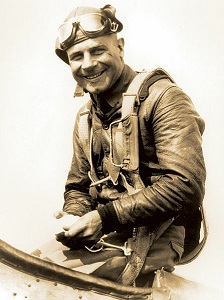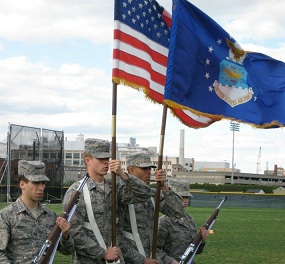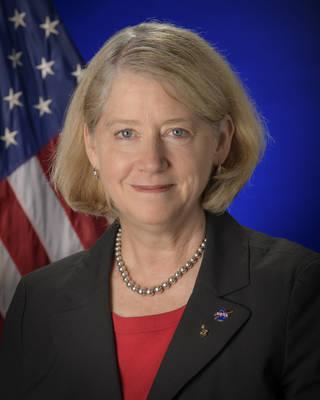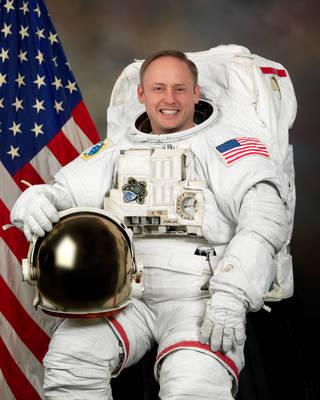Detachment 365, known as Doolittle's Raiders, proudly upholds the legacy of General James H. Doolittle (1896-1993), a pioneering aviator and military luminary. General Doolittle earned both his master’s and doctoral degrees in Aeronautics at MIT, and his groundbreaking achievements in aviation technology, along with the historic Doolittle Raid on Tokyo in 1942, continue to inspire our cadets. Graduates of our program leave with a foundation of confidence, self-discipline, and integrity, committed to embodying the character and dedication to country exemplified by General Doolittle.

Detachment 365 is committed to developing outstanding officers and leaders for the United States Air Force and Space Force, contributing not only to national security but also to the broader good of society. We embrace the "citizen-soldier" ideal, which holds that a military composed of engaged and educated citizens best serves the nation. By integrating military training within a civilian academic environment, we bridge the gap between the military and the public, fostering mutual understanding and respect.
While MIT is our primary host institution, our detachment also includes cadets from Harvard College, Tufts University, and Wellesley College. This diverse academic foundation ensures our graduates bring both technical and non-technical expertise, ready to serve as skilled officers and contributors to society. As they enter a world shaped by rapid technological advancements, medical innovation, and complex global relations, Det 365 graduates are well-equipped for impactful careers, both in uniform and in the civilian sector.

Beyond academic excellence, the distinction achieved by our newly commissioned officers is also rooted in MIT's long-standing military tradition. Since MIT's founding in 1865, military instruction was an essential component of the curriculum for nearly 100 years, in line with the Morrill Act of 1862, which required all land-grant institutions to provide military science courses. This tradition evolved with the National Defense Act of 1916, which unified military training under the federally controlled Reserve Officers' Training Corps (ROTC). MIT established the nation’s first ROTC program under the Army, later expanding to offer Air Force ROTC after the formation of the U.S. Air Force in 1947 and adding Navy ROTC in 1956. Since then, MIT's ROTC programs have commissioned over 12,000 officers across the three branches, with more than 150 of them reaching the rank of General or Admiral, underscoring the impact of MIT’s military heritage on officer development and leadership.
We invite you to explore Detachment 365 and discover the numerous benefits Air Force ROTC offers, including scholarships and opportunities for career development. For more information, feel free to contact us by e-mail or call 617-253-4475 for more information.
Alumni
Listed below are just some of the alumni that make us proud.
Are you an alum? Want to be featured? Click here.
Wellesley College Class of 1983

Colonel Pamela Melroy graduated from Wellesley College in 183 with a Bachelor of Arts degree in Physics and Astronomy. Following her graduation and commissioning into the US Air Force, she received a Master of Science degree in Earth and Planetary Sciences from Massachusetts Institute of Technology in 1984.
Col. Melroy was commissioned through the Air Force Reserve Officers’ Training Corps (ROTC) program in 1983. As a co-pilot, aircraft commander, instructor pilot, and test pilot, Col. Melroy logged more than 6,000 flight hours in more than 50 different aircraft before retiring from the Air Force in 2007. She is a veteran of Operation Desert Shield/Desert Storm and Operation Just Cause, with more than 200 combat and combat support hours.
Col. Melroy was selected as an astronaut candidate by NASA in December 1994. Initially assigned to astronaut support duties for launch and landing, she also worked advanced projects for the Astronaut Office. She also performed Capsule Communicator (CAPCOM) duties in mission control. In addition, she served on the Columbia Reconstruction Team as the lead for the crew module and served as Deputy Project Manager for the Columbia Crew Survival Investigation Team. In her final position, she served as Branch Chief for the Orion branch of the Astronaut Office.
One of only two women to command a space shuttle, Col. Melroy logged more than 38 days (924 hours) in space. She served as pilot on two flights, STS-92 in 2000 and STS-112 in 2002, and was the mission commander on STS-120 in 2007. All three of her missions were assembly missions to build the International Space Station.
Col. Melroy was sworn is as the NASA Deputy Administrator on June 21, 2021.

Col. Fincke graduated from MIT in 1989 with a Bachelor of Science in Aeronautics and Astronautics as well as a Bachelor of Science in Earth, Atmospheric and Planetary Sciences. Following his MIT education, he immediately attended a summer exchange program with the Moscow Aviation Institute in the former Soviet Union where he studied cosmonautics. Upon graduation from Stanford University in 1990, he entered the United States Air Force where he “washed out” of the Euro-NATO Joint Jet Pilot Training program and then was reassigned as a Space Systems Engineer and a Space Test Engineer at Los Angeles Air Force Base. As a Flight Test Engineer at Edwards and Eglin Air Force Bases, he flew in F-16 and F-15 aircraft. In January 1996, he reported to the Gifu Test Center, Gifu Air Base, Japan, where he was the United States Flight Test Liaison to the Japanese/United States XF-2 fighter program. Col. Fincke has over 1,900 flight hours in more than 30 different aircraft types.
Col. Fincke was selected as an astronaut by NASA in 1996. The Pennsylvania native is the veteran of three spaceflights, Expedition 9 in 2004, Expedition 18 in 2009, and STS-134 in 2011. For Expedition 9, Fincke served as Science Officer and Flight Engineer during his six-month stay onboard the International Space Station. While there, he performed four spacewalks. For Expedition 18, Fincke served as Commander, where he and his crew prepared the station for future six-person crews. For STS-134, he served as Mission Specialist and completed three spacewalks. Col. Fincke has logged more than a year in orbit, with nine space walks.
After working with NASA’s Commercial Crew Program to develop and bring two new crewed spacecraft online, the Space-X Crew Dragon and the Boeing CST-100 Starliner, Fincke was selected to serve as the Joint Operations Commander on the first crewed experimental test flight of the Starliner. Riding on the Atlas V launch vehicle, this will be Fincke's third rocket and spacecraft combination to orbit.
